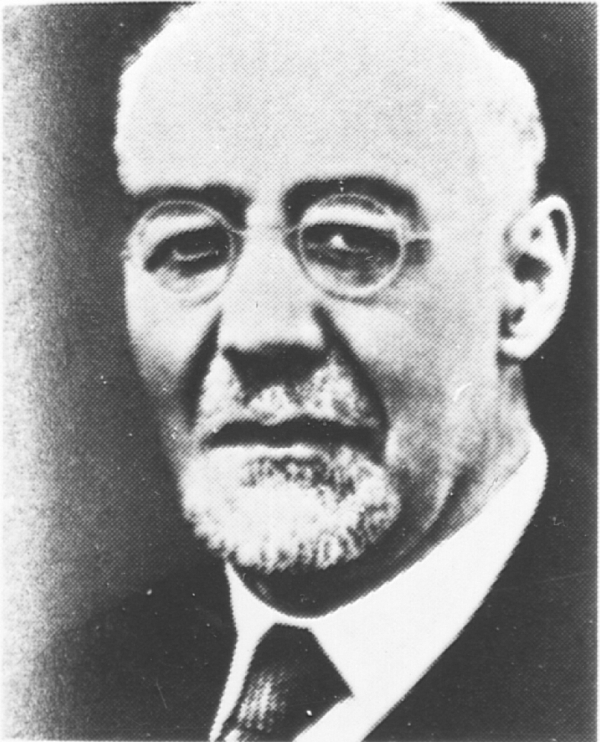
Leo Baeck, FA 5269-1
Leo Baeck (1873 – 1956) was undoubtedly one of the most prominent personalities of the Terezín ghetto. Prior to being deported to Terezín, he was active as the Chief Rabbi of Berlin, gave university lectures and held positions in several Jewish organizations. After 1933, he was a co-founder of the Reichsvertretung der Deutschen Juden (Reich’s Deputation of the German Jews) and became its first president. He helped thousands of Jews emigrate from Germany in time. Despite having received several offers from abroad, he himself refused to leave, feeling it was his moral obligation to stay and help where his fellows in faith needed him most. He was first and foremost a rabbi, his political activities notwithstanding, and worked to provide spiritual support and direction to his people. At the end of December 1943, he was deported to Terezín ghetto by transport I/87 along with the last remaining members of the (by then renamed) Reichsvereinigung der Juden in Deutschland (Reich’s Association of the Jews in Germany).
In Terezín, he was placed in one of the houses set aside for the so-called prominent inmates, in the L1 Street, later called Seestrasse. In the ghetto, the seventy years old Baeck was active mostly as a rabbi and a teacher. He also organized lectures. His fellow prisoners nevertheless also spied him in the early months after his deportation doing the standard ghetto work, such as waste disposal. At the same time, he secretly went on writing his work “Dieses Volk”, which was written largely in Terezín.
He was offered a position in the Jewish Council, which he originally refused. He was nevertheless treated as its honorary member. Eventually, a new Jewish Council was set up in December 1944 and the last Jewish Elder (Judenältester) was appointed. Baeck was named the president of the Council of Elders. He was in charge of the social affairs and regularly stood in for the Jewish Elder.
Leo Baeck was a man of firm moral principles and he did nit like to deviate from the rules. He had a disagreement with the then Judenältester Paul Eppstein over potential increase of food portions for young prisoners at the expense of the elderly. He also refused to acknowledge additional “appeals” from those placed in the Eastern transport, citing the gravity of such decision. If anyone was to be taken out of such transport, someone else would have to be put in. Who will judge whose life has more worth? He never let on anything he knew about the horrific place where the transports from Terezín were headed. Baeck and several others learned this information as early as 1943, and subsequently had it confirmed by Vítězslav Lederer, a prisoner who escaped from Auschwitz and secretly returned to Terezín in the spring of 1944 to let his friends there know. Leo Baeck brooded over the news and what was to be done with it for a long time. He eventually decided no to tell anyone. In one of his post-war interviews, he justified his decisions by his unwillingness to take the last remnants of hope from the inmates. Learning about the destination of the Eastern transports could have resulted in despair and death in Terezín. This way, there was still a chance that the prisoners would stay in the ghetto and survive. His decision was without a doubt a very difficult one to make. After the war, many people criticized him for it.
Among his collaborators in Terezín (even after its liberation) was the historian, author and scientist, H. G. Adler, who later authored significant works on the life in the Terezín ghetto. In his introduction to Alder’s work “Theresienstadt 1941 – 1945”, Baeck described Terezín as “an experiment of the will to evil”.
Baeck later commented that among his most important duties in Terezín were funerals, wherein he often took part as the rabbi he was.
Baeck did not deserve his people even though he could have left in a transport to Switzerland in February 1945. He stayed in Terezín after the liberation, helping the sick and the dying during the typhus epidemic. He was always there for those who needed him. He left on 1 July 1945 for London where his daughter’s family lived.
Do

